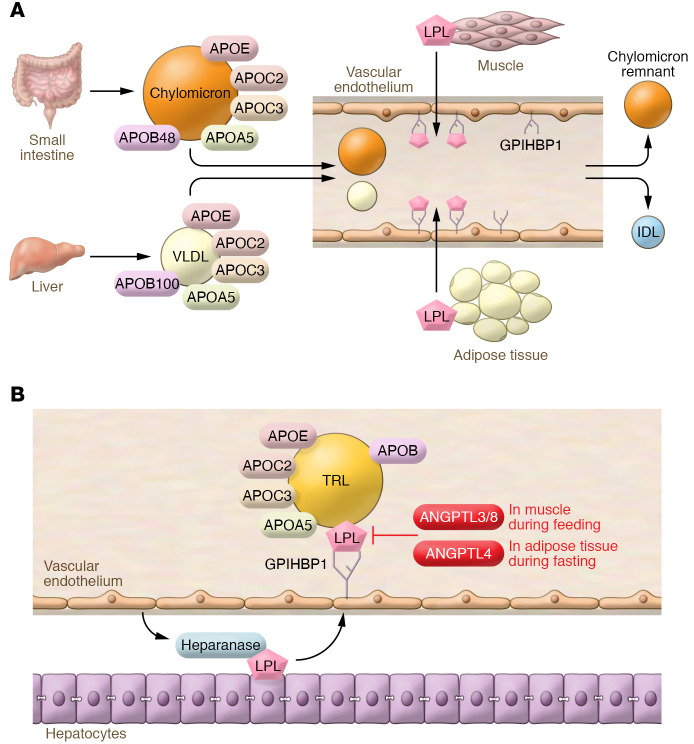Figure 2. Lipolysis and TRL metabolism.
(A) Lipolysis of circulating TRLs. Chylomicrons assembled in the small intestine and VLDL assembled in the liver contain proteins that control their intravascular metabolism. APOC2 is the activator of LPL. APOA5 also acts to enhance lipolysis, while APOC3 inhibits lipolysis. LPL is predominantly synthesized in adipose tissue, skeletal muscle, and heart. LPL transfers to the capillary lumen, where it associates with glycosylphosphatidylinositol-anchored HDL-binding protein 1 (GPIHBP1), releases free fatty acids from TRLs, and creates chylomicron remnants and intermediate-density lipoproteins (IDLs). (B) Lipolysis reaction. TRLs associate with LPL in the capillary lumen, a process thought to be assisted by APOA5. APOC2 activates LPL; APOC3 inhibits LPL. ANGPTLs also inhibit LPL. ANGPTL3, primarily produced in the liver, is most active in complex with ANGPTL8. ANGPTL4, though widely expressed, modulates LPL activity especially in adipose tissue.

